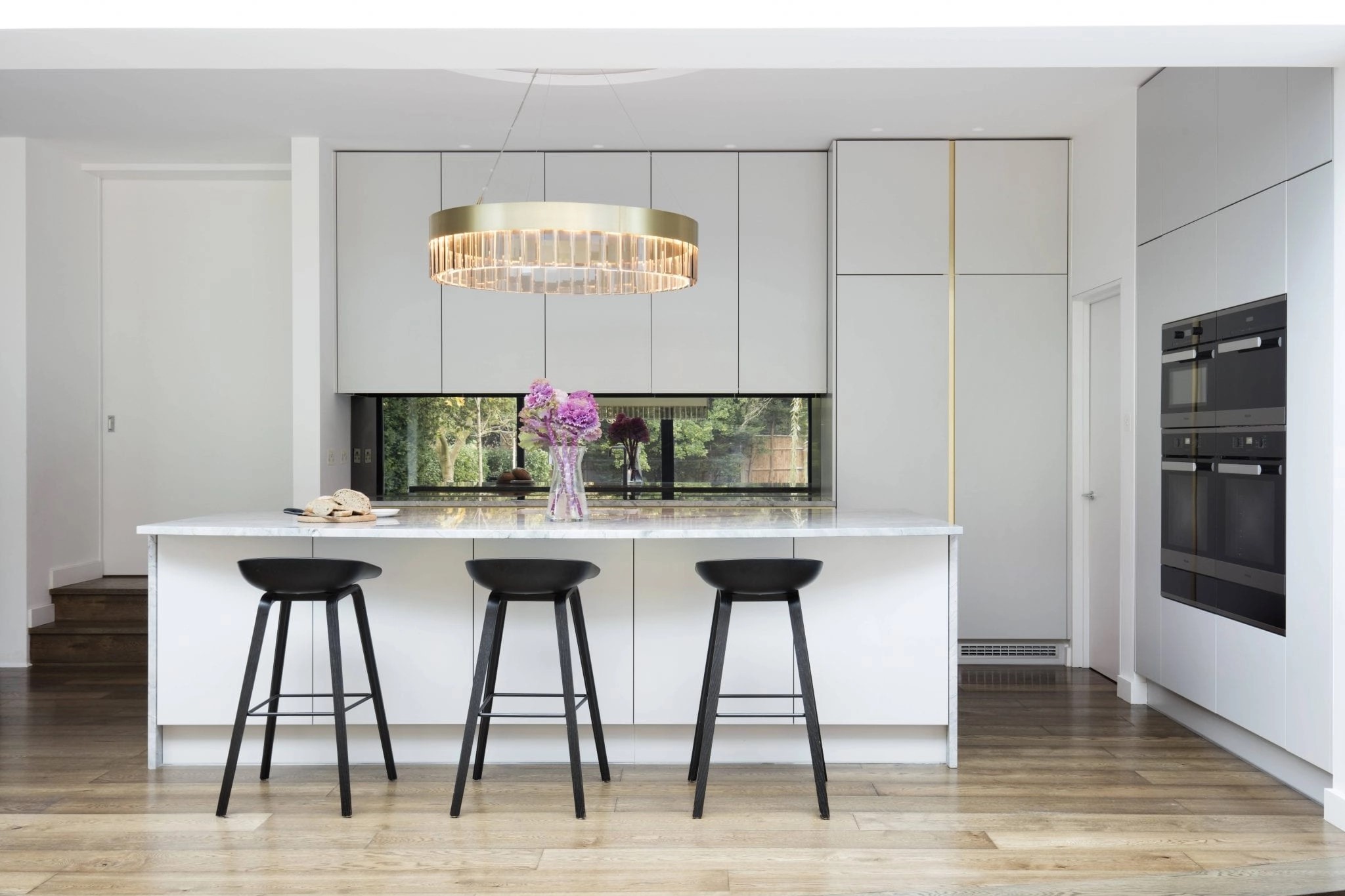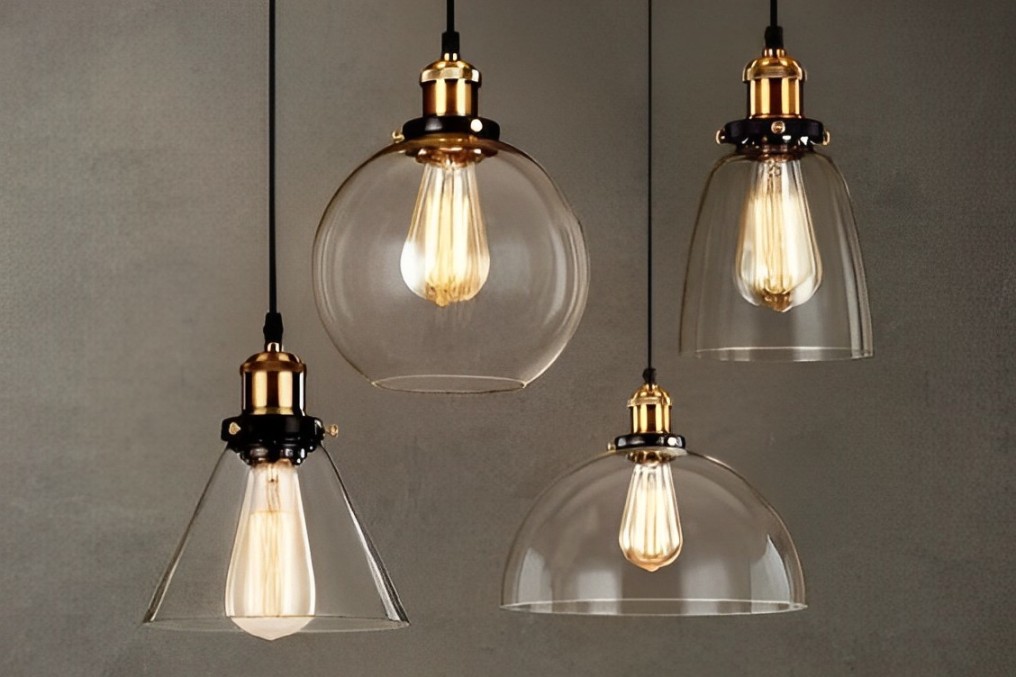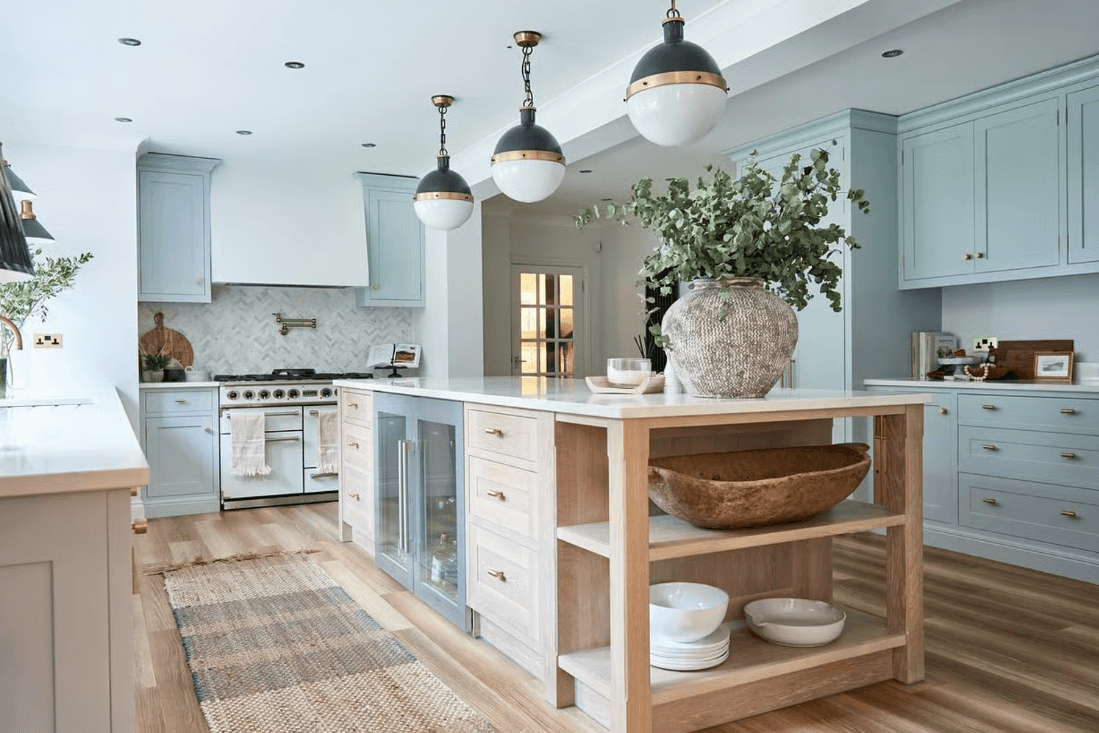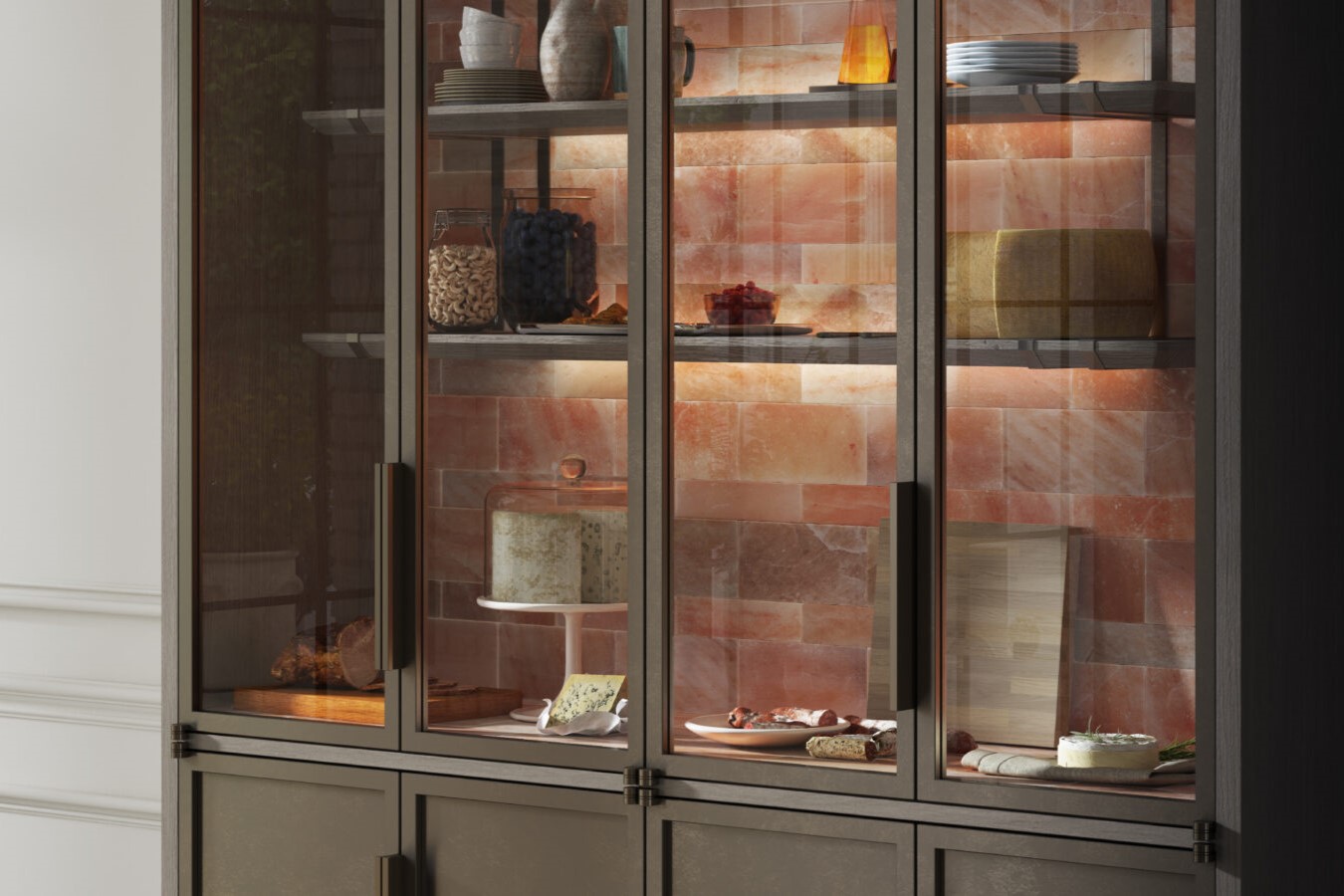Lighting can make or break the atmosphere of your kitchen. It also impacts the functionality of the room. Whether you’re updating your space or starting from scratch, selecting the right lighting is key to creating the perfect environment. In this guide, we’ll answer common questions about lighting for kitchens, helping you make informed choices.
 Amberth, Sheen Common Drive Project
Amberth, Sheen Common Drive Project
What type of lighting works best for a kitchen island?
The right lighting can transform your kitchen island into a focal point. Popular choices include pendant lights, chandeliers, or sputnik lights – depending on the style of your kitchen. Many people follow the rule of 3s or 5s when hanging lighting fixtures, with three pendants in a row being the most common arrangement.
For a clean, modern look, bar-style suspension lights are a great option. These create a sleek, minimalist appearance, ideal for contemporary kitchens.
How important is the size and weight of kitchen lighting?
Size and weight are critical factors when choosing kitchen lighting. If your fixture is particularly heavy, you may need to check with your builder whether your ceiling can support it or if it needs reinforcement. Always check the light’s weight on the supplier’s website. If it’s not listed, don’t hesitate to contact the company. It’s important to verify these details to avoid surprises during installation.
Where should the lighting be installed on my kitchen island?
The ideal height for kitchen island lighting is typically 80-90cm above the surface of the island. However, this can vary based on the client’s height and the ceiling height of the room. For kitchens with lower ceilings check the minimum drop of the fixture, including the chain or pole and ceiling canopy, to ensure it fits.
When hanging a row of pendants above the island, spacing is key. Make sure that the lights are proportional to the size of the island. As a rule of thumb, aim for a gap of at least 50-70cm between each light, depending on the size of the lighting fixtures island itself.
How should lighting be positioned in the kitchen?
If you have tall units that reach all the way to the ceiling, it’s important to position your ceiling lights at a distance from the units. First, this allows the cabinet doors to open freely. Second, it prevents any heat from damaging the doors over time. While LED lights don’t produce as much heat as traditional bulbs, they still emit warmth, which could potentially cause long-term damage if the lights are too close to the cabinetry.
It’s also worth considering under-cabinet lighting to illuminate your countertops and provide task lighting. These lights are not only practical but can also enhance the overall ambience of the kitchen.
Is it a good idea to add lighting to kitchen drawers and cabinets?
Absolutely! Adding lights inside drawers, especially for cutlery and utensils, can be a game-changer in terms of functionality. It provides visibility in areas that are often in shadow, making everyday tasks easier.
If you have a pantry unit, consider adding sensor-operated lighting inside. This way, the lights turn on automatically when the door opens, giving you immediate visibility without the need to install external switches.
What are the best downlights to use in a kitchen?
When it comes to downlights, there are several styles and installation systems that can be mixed and matched to suit your kitchen’s design. Some of the most popular choices include:
- Recessed downlights: These are sleek and unobtrusive, providing even light without drawing attention to the fixture itself.
- Pendant lights: These are perfect for creating a focal point, particularly over an island or dining area. See an example of pendant lights here.
- Track lights: Track lights offer flexibility in positioning, allowing you to adjust the direction of light as needed. Check out track lighting in this design.
- Wall lights: These are often used as accent lighting to highlight certain features, such as artwork or shelving.
Choosing the right combination of these styles can enhance the overall design and functionality of your kitchen.
Under-unit lighting: are they as important as they’re made out to be?
Under-cabinet lighting is a game-changer when it comes to kitchen functionality and style. These lights illuminate work surfaces, making food preparation safer and more efficient while also enhancing the overall ambience of your space.
LED Under-Cabinet Lighting Options:
- Spotlights: Ideal for focused task lighting, spotlights can be installed under cabinets to direct light precisely where you need them. However, they are typically more suited to mid-range designs.
- Flush-Fitted LED Strip Lights: For high-end kitchen projects, flush-fitted LED strip lights are the go-to option. They create a sleek, continuous glow that evenly illuminates your work surfaces without any harsh shadows. These strips can be installed discreetly, maintaining the clean lines of a modern kitchen.
Colour Options for LED Strip Lights:
- Warm White (2700K-3000K): This provides a soft, inviting glow that creates a cosy atmosphere, perfect for homes that favour a traditional or transitional style.
- Natural White (4000K): This balanced light offers a neutral, daylight-like effect, ideal for those who want a crisp, clear view of their work surfaces without the starkness of cold lighting.
- Cool White (5000K-6000K): Best for contemporary kitchens, cool white light enhances a sleek, modern aesthetic and is perfect for those who prefer a brighter, more vibrant feel.
For those looking to make a bold statement, under-cabinet lights are also available in different colours like red, blue, or green. These options add a playful touch, allowing you to change the mood of your kitchen at the touch of a button.
Adding under-cabinet lighting is not just about aesthetics—it’s a practical choice that enhances the overall usability of your kitchen, making it one of the most impactful upgrades you can make.
General Lighting Advice: What To Consider When Choosing Bulbs
 Amberths Pinterest Inspiration
Amberths Pinterest Inspiration
Choosing the right bulb can make a big difference in the atmosphere and functionality of your space. Here’s what you need to consider:
- Fitting: Always check the type of fitting required for your light fixture. Common options include G9 bulbs for bathrooms, but this varies depending on the fixture.
- Shape: The bulb’s shape should complement the fixture’s design. For example, candle bulbs are often used in chandeliers, while Edison-style bulbs suit industrial fixtures.
- Dimmable: If you have a dimmer switch, you’ll need dimmable bulbs to avoid flickering.
- Kelvin (Light Temperature): Kelvin measures the warmth or coolness of the light. For homes, 2700K to 3000K is ideal, as it provides a warm, welcoming glow without feeling too cold or harsh.
- Wattage and Lumens: Wattage determines brightness. For multi-bulb fixtures, consider using lower wattages to avoid overpowering the room. Higher wattages are better for task lighting.
- LED Bulbs: LED bulbs are energy-efficient and long-lasting. For the best aesthetic, continuous LED strips provide an even glow, while dotted strips create a different effect.
- CRI (Colour Rendering Index): CRI measures the quality of the light source and its ability to reveal colours accurately. For home lighting, a CRI of 80+ is good, with 90+ considered excellent for true colour representation.
Lighting is more than just a finishing touch. It’s an integral part of how your interior feels and functions. Getting it right will create a space that’s evenly illuminated, atmospheric and practical.


